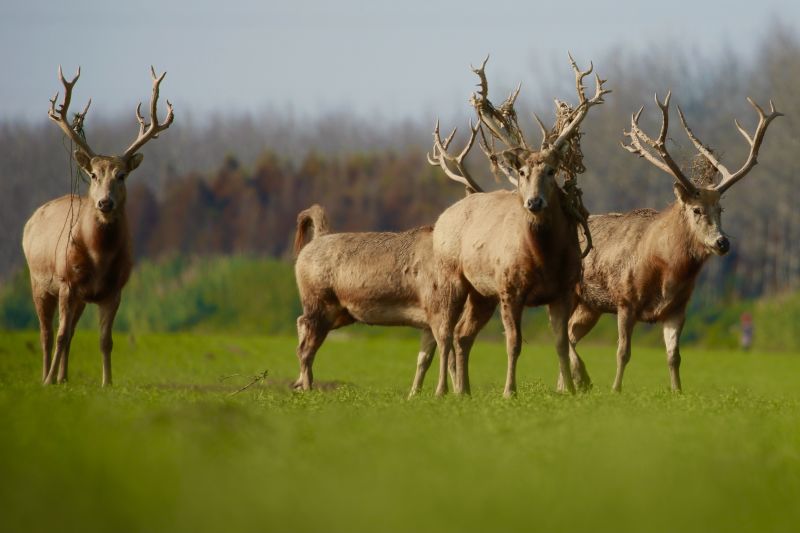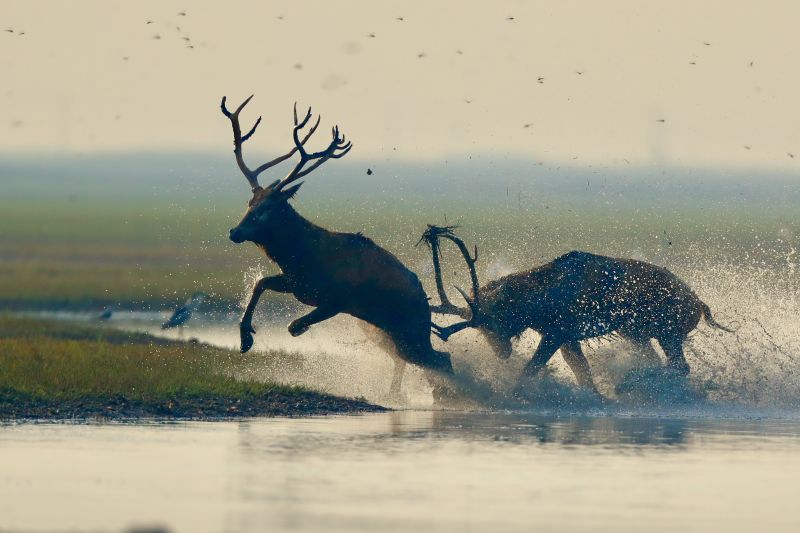In mid-October, Dr. Zhou Jinfeng, Deputy Director-General and Secretary-General of CBCGDF was interviewed by AFP and gave a detailed explanation on how the Père David's deer, whose numbers declined at the end of the Qing Dynasty, went to Europe and came back to China. What Dr. Zhou shared in the interview is compiled below.
There is a process of change in the distribution of moose, with some minor subpopulation changes. The most northern habitat is found in Heilongjiang and the most southern habitat is found in Hainan Island. Mainland China is the traditional habitat of the Père David's deer, and archaeological discoveries were made more than 3,000 years ago in almost all of mainland China, including Gansu.
First of all, let's talk about the extinction of the Milu deer. They have a long history in China, only in recent centuries, they have become rare in the wild. During the Yuan Dynasty, Milu were domesticated and bred in the royal hunting grounds as hunting animals. But in the late Qing Dynasty, Milu deer were basically only found in the royal hunting grounds and rarely seen in the wild. One of the most important royal hunting grounds at that time was in the area of Nanhaizi in Beijing.
A French missionary, David, discovered the Père David's deer and brought the specimens back to Europe. It was a very sensational event at that time, and then a small number of Milu deer were brought to Europe by the European zoos and some preferences.
The 11th Duke of Bedford, England, acquired a dozen Milu deer from European zoos and markets, kept them on his estate, and kept them until the 1980s, and in 1985, there was already a large herd of several hundred Milu deer. The year 1985 was the most intense and crucial year in the negotiation process of the return of Hong Kong to China when the Duke of Bedford family offered to return the Milu deer to China and to finance a sum of money to help them return. The first 20 Milu deer were reintroduced to China, and money was also paid to establish the China Père David's Deer Foundation. Lv Zhengcao, then vice-chairman of the National Committee of Chinese People's Political Consultative Conference, was the president of the foundation.
Then the national Forestry Department introduced a dozen of Milu deer from European zoos, which were brought to Dafeng, Jiangsu Province to establish a Milu deer park. Several times, dozens of deer were introduced, and the three most important deer parks were established in Dafeng, Jiangsu, Shishou, Hubei, and Nanhaizi, Beijing.
How many deer have been bred in the three parks from 1985 to today? There is no exact number yet, but there are about 8,000 of them. The most important one is the Milu Deer Park in Shishou, Hubei. In 1998, when the Yangtze River basin had a big flood, the Milu deer left Shishou with the flood and went to Dongting Lake, Poyang Lake, and the lake area in the lower Yangtze River with the flood.
A few years later, it was found that they successfully survived in the wild and flourished with an expanding population.


Original Chinese article: https://mp.weixin.qq.com/s/YY-eyTIS1I1tydokfxx3lA
Translator/Daisy
Contribution
https://www.paypal.me/CBCGDFChina
http://www.cbcgdf.org/English/ConfirmDonaTion/0.html
